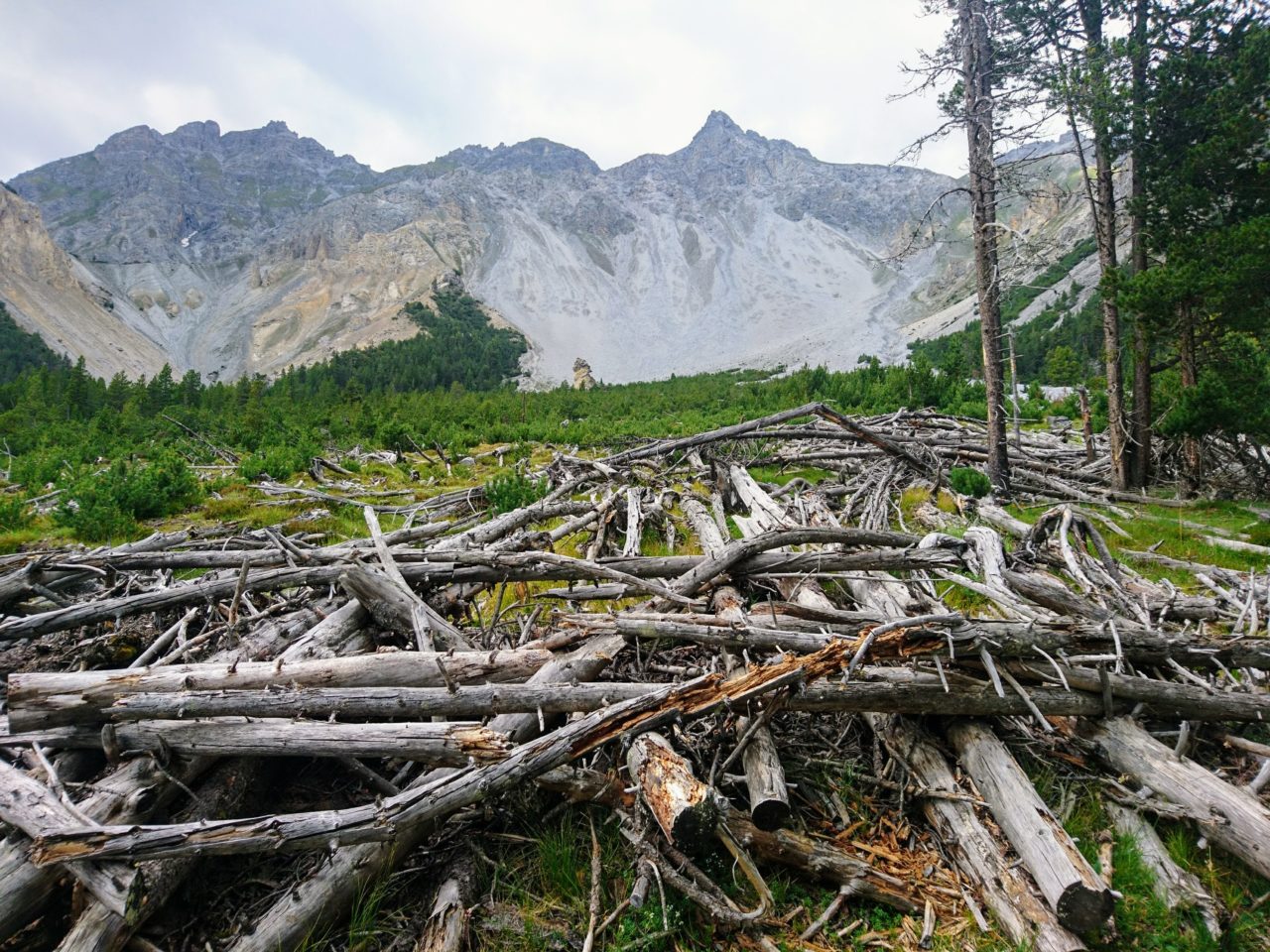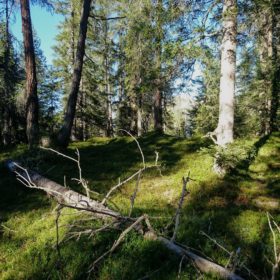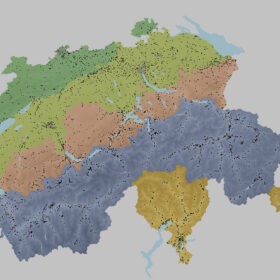
Mountain forests provide many essential ecosystem services, such as protection from natural hazards, carbon sequestration, habitats for rare species, and spaces for recreation. However, these forests are experiencing more and more natural disturbances, including windthrows, bark beetle outbreaks, and forest fires, which may jeopardize their capacity to provide ecosystem services.
As these disturbances are likely to become even more frequent with climate change, they pose a challenge to forest management in mountain regions. Disturbances lead to a loss of carbon from the ecosystem and can reduce the forests’ protective function. Disturbed forests may also be perceived as less beautiful by hikers or tourists. At the same time, dead wood left in the forest after disturbances provides habitats to many species, and can help provide protection from avalanches and rockfall. The risk to ecosystem services due to disturbances therefore depends not only on the forest itself, but also on management interventions (such as salvage logging), people’s perceptions, and the local demand for ecosystem services.
Davos and the Swiss National Park
To better understand these risks, we mapped the disturbance risk to ecosystem services in the landscape of Davos and in the strictly protected Swiss National Park with its surrounding. The results of this study have recently been published in the Journal of Environmental Management. The level of risk is heterogeneous in space, and different between areas inside and outside the National Park. Inside the park, the overall risk of losing ecosystem services is lower, and more disturbances would lead to an improvement of habitats for some species (e.g. the three-toed woodpecker). Outside the park, areas with a high value of avalanche protection and carbon sequestration mostly have a high risk of losing these services, indicating a tradeoff between a high current provision of ecosystem services and their long-term stability. This type of risk mapping can help support decisions and identify priorities in forest management.
Dr. Ana Stritih completed her doctorate at the Chair of Planning of Landscape and Urban Systems (PLUS) in June 2021. She is now continuing her research as a postdoc at the Technical University of Munich.

